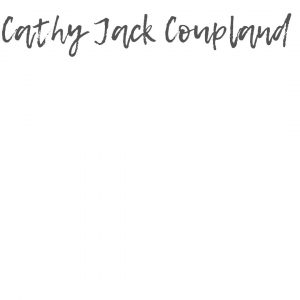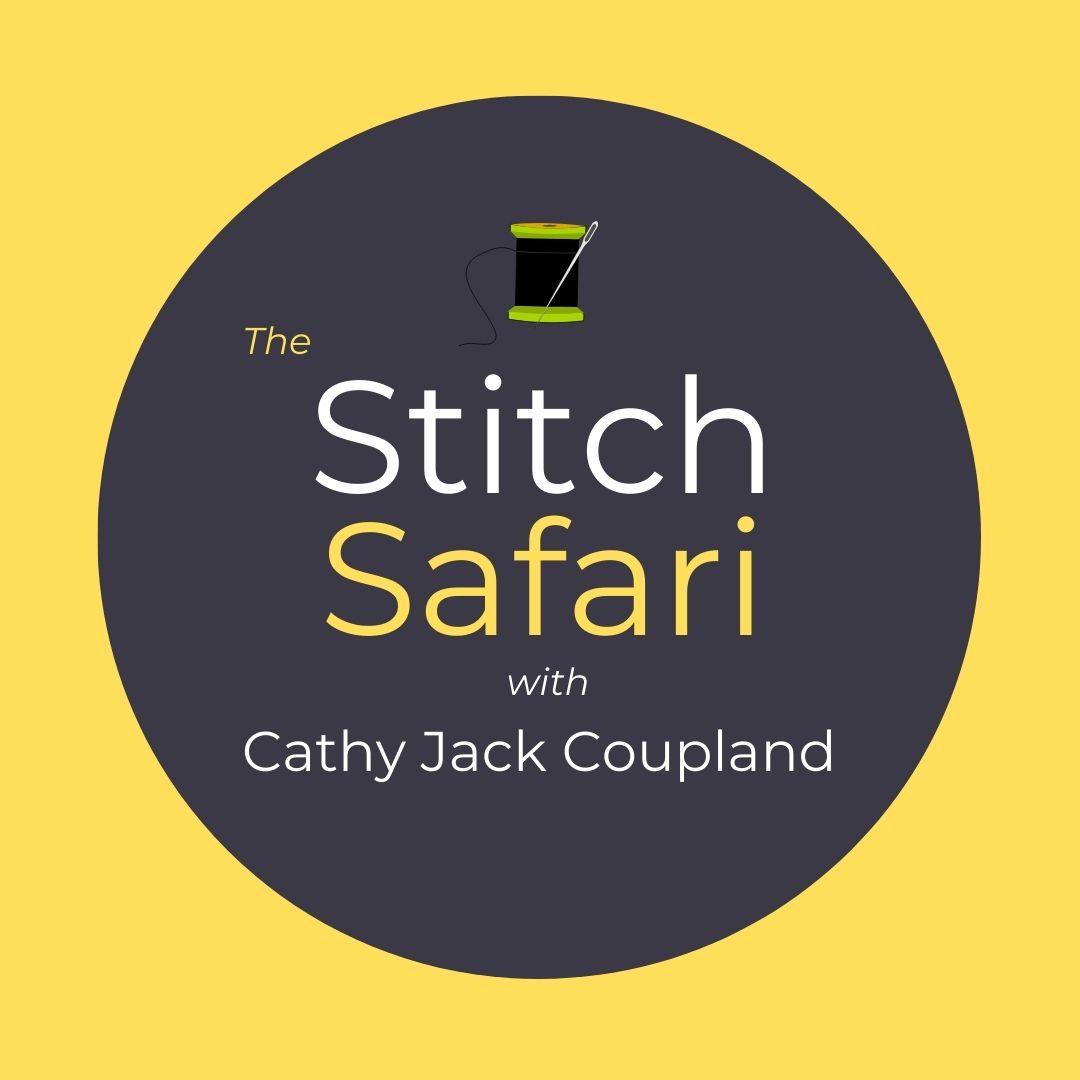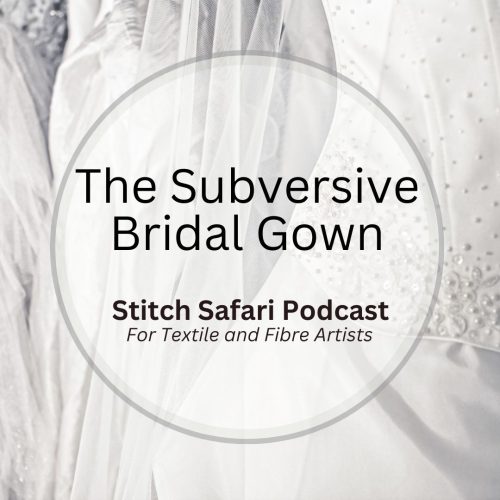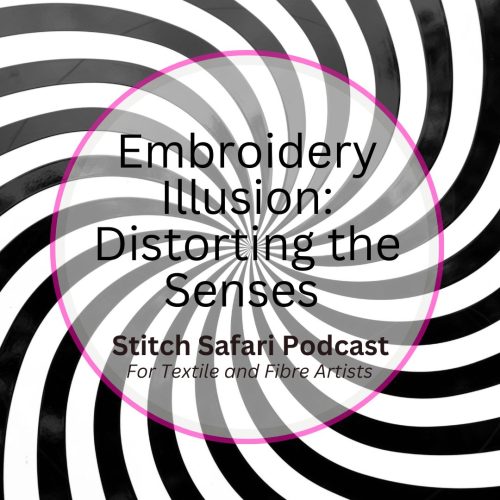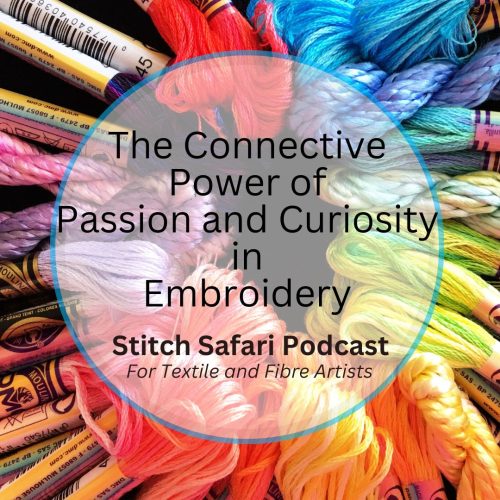Books are essential for my peace of mind, so I have a variety in my library covering technique, inspiration, history and those I simply love to look at.
I’ve chosen three books published at different times – 1980, 1994, and 2013 giving scope to all those ideas just waiting to be released into new traditional or innovative work, because I believe ‘you need to look back to move forward’.
These are the sort of books that are pure gold, in my opinion – all written by well-known, established and highly respected English embroiderers in that Golden Age of English embroidery or just on the cusp of it.
The authors are women who are the heavy lifters of the embroidery world.
Embroidery, design, research, process and innovation mean something to them, leading them to further their knowledge in their field of expertise and to share it with us via their writing, lectures and teaching.
So, who are these women and why do their books, written decades ago still resonate with me?
That’s the magic of books, good old-fashioned, hold-in-your-hands paper and print page books – we can have a relationship with them that doesn’t seem to happen with downloaded books – even though I buy them too, so in this episode I want to offer insights into each of these amazingly talented women – into their vision of themselves and their work because I know we can all relate to them in some way or perhaps see that the path we’re taking isn’t any different from that same path they took.
We’re not reinventing the wheel here, we’re following in some fairly well-used footsteps. Let’s learn more.
The first book to be reviewed was written by Anne Morrell, and published by BT Batsford in 1994 – titled The Techniques of Indian Embroidery.
Anne Morrell is an author, Textile Artist and Teacher, born in Chennai, India and was a former Head of Embroidery at the Manchester Metropolitan University. Anne has taught for more than thirty years and has published extensively in her field of embroidery along with having her work exhibited in various museums and galleries and touring exhibitions on four continents. This fits perfectly with her research interests in historic and ethnic textiles, particularly those of the Indian subcontinent.
Currently, Anne is a freelance lecturer, author and embroiderer as well as a Consultant at the Calico Museum of Textiles in Ahmedabad, India.
I’m going to include Anne’s artist statement from her website here because it encapsulates her embroidery story.
‘It is said that artworks often mean more than one thing and certainly more than the artist knows – that artist’s work is between meaning and reason. I use stitch as a mark and language to capture closely observed moments in nature – light, time and seasons – same/similar marks in various locations. In part perhaps a symbolic language through which I try to express my ideas.
I like my work to be taught and stretched, but not exclusively, which often means that I use cloth as a means to an end, not a textile that I am embellishing or adding to. The cloth becomes mine to change and do with as I will. I like being unconventional, defying the rules that were taught in needlework at school, which resulted in my ‘bad’ sewing which puckers the fabric. I like using techniques that I know will do what was considered ‘wrong’. I like secrets such as the use of the pattern that is an early symbol for water: putting that across a work hides a possible title to the work. The person viewing the work sees a line or pattern and I see graffiti. I hope I mix, join and connect with work that can be still, be a noise and sometimes unsettling.
It is perhaps the way I have progressed through making, from a very free interpretation of what is textiles/collage/stitch to hand stitch, in what might be seen as a retrograde direction. But through challenging the subject and oneself it is a journey like any other, where ideas move and develop and change and one becomes more confident. As in any other discipline, one learns as one goes along. I love to learn and to challenge through my stitch’.
Back to her book The Techniques of Indian Embroidery.
The dust jacket in the book tells the story of the richness and diversity of embroidery in India over centuries – how it’s become a way of life encompassing clothing, adorning animals, used in temples, homes and other buildings.
Now if you’re into the different stitches and techniques used in Indian embroidery including quilting, pattern darning, counted thread work, white work, mirror work, appliqué and patchwork this will be an invaluable guide for you.
There’s a fascinating picture that emerges within these pages -and it’s the exploration and evolution of local traditions and the innovation of stitches and designs that are continually being added to create new techniques and possibilities.
Each chapter begins with a short historical overview of each technique, its use and in some cases, its use in different communities – and the samples are all drawn from extant work.
One sample image shows how a Kantha leaf is worked creating a striped effect by using a simple running stitch. It’s a clever rendition of such an easy technique that captures the eye.
The counted thread work of Phulkari is stunning, and the Whitework and Shadow work on soft muslin are just delightful.
There are pages of images of mirror work, with samples showing the technique and the decorative embroidery stitches used to surround the mirror work to great effect.
There are also chapters on embroidery with a hook, metal work, appliqué and patchwork.
Yes, this book is 30 years old, but these techniques have not changed – rather you can learn how to do them, then change them yourself, or wallow in their beauty as is.
Many images are black and white – and all the sample work is too, but the work is so stunning that deleting the colour may help focus on the work and the design – there are many coloured images so don’t be put off.
This book is not for the beginner embroiderer – but it will appeal to those confident stitchers who like to draw inspiration from historical, and traditional work.
Images of items such as a Kashmiria prayer mat, a bag made by the Banjara or a bodice front made in the Kutch in Gujarat are followed by an image showing sampling of the stitches used to make those pieces – both from the front of the embroidery sample and the back. The stitches used in the work are noted in the text so you can investigate those further if you wish to.
If you wish to design work inspired by Indian embroidery, then this is the tome to research.
It finishes with a glossary of stitches and several recommended books, magazine articles and other useful publications – all of which may be hard to find now – but well worth checking just in case.
It’s only a small book, but it holds a wealth of embroidery history and technique.
The next book is titled ‘Embroidery and Nature’, written by Jan Messent, and published by BT Batsford, London in 1980.
If you’re a nature lover, but don’t know where to start to create your design work for embroidery, then I would highly recommend this book to you. I’d recommend it simply for its design inspiration and ideas.
But let’s start with Jan the person.
Jan Messent is a qualified teacher of Art, History and English who became deeply involved with embroidery as an art form and as a member of The Embroiderers’ Guild taught embroidery design to its members, wrote and illustrated design books and lectured worldwide.
Jan became interested in experimental knitting and crochet opening new dimensions for the creative use of yarn.
Jan continues to embroider but also enjoys writing historical fiction, reading, painting and listening to music.
Jan has lectured worldwide, written and illustrated numerous books dealing with embroidery and design and taught embroidery design to many – and that’s about all I could find out about Jan – and I own two of her books – for such a prolific and well-published author that’s unusual.
So let’s focus on the book. It should be mentioned that the entire book is in black and white.
Jan writes that this is an ideas book for those wishing to explore the natural world further – and this is what I love about all these women mentioned today – they all go back to study the history of things – whether that be design or stitch – and that gives them all such a strong platform from which to work.
The introduction alone mentions sources of research – the portrayal of nature throughout history, the techniques of textile crafts such as lace, weaving, knitting, crochet and carpet making, the exquisite garments from China and Japan and mythological creatures woven and embroidered in South America around the 15th century.
Then Jan writes about the styles of design used in various countries that are unique and recognisable in embroidery throughout history to the present day.
For instance, there’s an image of a dog taken from the medieval Bayeaux Tapestry that seems very similar to one worked on a mola made by the Cuna Indians of the San Blas Islands in Panama.
There’s a very simple seven-point guide on how to research a subject to help make the design process easier – now that may seem old-school, but trust me, it works.
There’s also a chapter on Experiments in design – again very simply set out but full of imaginative ideas to take a design further or use in a different way – now I think this is gold.
Honestly, there’s so much in this book. The Chapter on Nature in Colour explores subjects to study, there’s a chapter on Patterns in Nature, another on Nature’s circles and my favourite, Texture in Nature.
Details in Nature are covered and lastly, dimension is briefly touched upon.
The embroidery from the 1980’s is dated, but still interesting. Just look at the possibilities because design never dates and the exploration of design hasn’t changed either – it’s just become more high-tech.
This book is old-school, as you would expect from a book that is 44 years old – but I love it.
If you’re the sort of person who works well on their own, then use this book as direction and work through it.
Do what Jan suggests and make your research resource and work through the book chapter by chapter – this is a workshop in a book, plus it’s much cheaper.
Look out for a second-hand copy of the book ‘Embroidery and Nature’ by Jan Messent.
Now to finish, let’s move on to Jean Draper. I did a Masterclass with Jean many years ago now, and this book is as informative as her classes.
Jean Draper is a member of the well-known 62 Group and Textile Study Group. She’s exhibited widely and has work held in public and private collections.
I think it would be fair to say that Jean is a great observer who has worked with a needle and thread from a very young age.
Jean says that ‘the real attraction to textiles as a medium came later when she was introduced to the breadth of possibilities afforded by the in-depth study of textiles while at art college.’
It’s that close observation of minute details of her subject matter that inspires Jean to utilise the unique qualities of texture in her textile art reflecting the shapes, patterns and networks found in barren landscapes in Jean’s work – you can almost feel the erosion, wear and growth as she explores regeneration, recovery and other themes through her textile art.
But locked within is the emotional aspect of time, place and people – almost of timelessness especially in her self-supporting networks of wrapped, stitched and layered threads.
It’s that awareness and observation that’s the basis of her process supported by drawing, note-taking, visiting galleries and museums and sampling.
Working thematically, Jean has several pieces at varying stages of development – and this is what I find interesting – one work follows on from another – and that makes perfect sense to me – those ideas, all the research begin to solidify and resonate to create new ideas.
Study trips to India affected her stitching offering a greater awareness of colour combinations, pattern-making, and recycling – especially the use of one-stitch techniques and how that could be broadened and manipulated.
So the book of Jean’s that I’m reviewing in this episode is ‘Stitch and Structure – Design and Technique in Two and Three-Dimensional Textiles, published in 2013 by Batsford, London.
This is a book to read from cover to cover – perhaps two or three times. In her introduction Jean writes this: ‘The overriding principle during my teaching career has been to encourage creative growth in others, giving them the opportunities to develop their own ideas and personal style of working. I certainly do not want to prescribe the outcomes of your work, but by suggesting starting points and possible additional working experiments you might carry out, I intend to inspire and encourage you to develop interesting ideas for yourself.’
Jean does this by noting often throughout each chapter ‘Further work you could…and the outcome is of course left up to you.
The overriding premise is how structure in the natural and built environment can offer inspiration for the design and construction of stitched textile art.
As the title suggests this inspiration may be interpreted in two-dimensional structural surfaces or more intricate three-dimensional constructions using combinations of stitch, fabric and mixed media incorporating both hand and machine stitching techniques.
Jean’s interpretative drawings are stunning and the photography of the work, is impeccable – but it goes further to deal with pushing the boundaries of working with thread and thinking of thread as a linear structure.
There’s so much ‘to get’ in this book, but if you’re at all like me, you need to take your time to absorb it.
And it’s that idea of taking stitches into the air that I find so fascinating.
This is a stunningly beautiful book simply to look at, but read it and read it again to gain its true worth.
As an experienced teacher and textile artist, as well as past National Chairman of the Embroiderers’ Guild from 1995-2001 – this talented embroidered shares a wealth of knowledge in this book, Stitch and Structure – Design and Technique in Two and Three-Dimensional Textiles, and it comes highly recommended from me.
Wow, three very different embroiderers, authors and textile artists covering three different eras.
I’m so glad I chose these books – it’s made me take a closer look at all of them and reacquaint myself with their value.
These women promote embroidery as art, professionally and with great heart and I have no hesitation in recommending each of the books mentioned here.
Yes, it’s great to look back to move forward.
